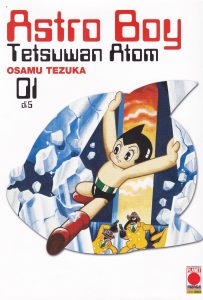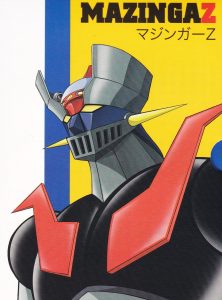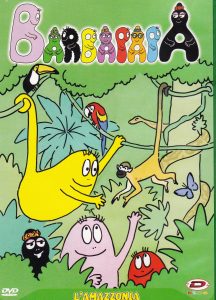
di Federico Paolini
Abstract
Abstract Eng
Bio Eng
Bio
Where Engels and Thoreau could not, Grendizer and Heidi could?
The thesis of this article1 is that there is a connection between the affirmation of mass environmentalism and the success of pop culture: The aim of the work is to suggest a different perspective to examine a complex and divisive topic such as the environment (and its political declination, environmentalism), inserting it into a global cultural context.
This research starts from some theoretical references such as Marshall McLuhan (1964, 1967), Jean Baudrillard (1982), Pierre Bourdieu (1996) and Giovanni Sartori (1997): the concept is that there was a mobility of ideas that started from environmental philosophy and political ecology to reach the authors of anime cartoons. The authors have made these conceptions their own by simplifying them in the scripts: in this facilitated form the ideas have arrived to the large television audience composed mostly of children and adolescents.
In turn, the public began to become familiar with these concepts and, in this way, began to approach the instances promoted by environmentalism. So, the idea is that Japanese anime have created a connection between the theories of environmental philosophy and political ecology and the mass imaginary. In essence, the success of Japanese cartoons would have contributed to the vulgarization of those concepts, favoring their penetration into the cultural imagination of the masses (Bartoletti 2001; Cross and Smits 2008).
The imagery of the children and adolescents of the 1970s and 1980s was deeply colonized by the television series aired at that time (Pellitteri 2018). It does not seem senseless to affirm that the closeness to the environmental problems of those generations (far more sensitive than their parents, raised in the myth of the economic miracle) is not due to the real knowledge of the terms of the environmental question, but to the fascination exerted on of them from those anime universes populated by colorful heroes, robots, animals and pastel-colored landscapes.
The narrative rhetoric of anime is pervaded by continuous references to nature and the urgent need to protect it. For children and adolescents in the 1970s and 1980s (the first generation of widespread well-being), adherence to organized environmentalism appears to be much more linked to the emergence of a environmentalist sentiment conveyed by mass visual culture rather than in-depth readings of the Dialectics of Nature by Friedrich Engels or Walden by Henry Thoreau. In short, where Engels and Thoreau could not, Grendizer and Heidi could?
Three narrative universes
The anime of the television golden age (the 70s-80s of the XX Century) can be divided into three narrative universes: The epic of robots; the fairy tale of everyday life; anime for children with anthropomorphic animals as main characters.
Mecha anime: disasters and resource scarcity
To the first universe belong the stories of the the fighting robots (mecha anime). The mecha series have a uniform narrative scheme (Ladd and Deneroff 2009, Nacci 2016, Nicora 2017): on one side there are the positive heroes; on the other, the representatives of Evil whose purpose is to subject the Earth to seize its resources and enslave the population. These are anthropocentric narratives, influenced by the myth of technological modernization and the geopolitical climate of the time, dominated by the cold war and the constant fear of a nuclear catastrophe (Pellitteri 2009). To understand the atmosphere of those years it is enough to think of the success of films such as The China Syndrome, directed by James Bridges in 1979 or The Day After, directed by Nicholas Meyer in 1983.
The storytelling has been influenced by ‘steady state’ literature and by ‘limits to growth’ debate: Silent Spring by Rachel Carson was published in 1962; The Population Bomb by Paul Ehrlich and The Tragedy of the Commons by Garrett Hardin in 1968; The Closing Circle by Barry Commoner in 1971; A Blueprint for Survival by Edward Goldsmith and Robert Allen and the Limits to Growth report in 1972. The telling has been also influenced by the issue of resources scarcity and conflicts over their use: this issue became prominent after the oil price increases caused by the Yom Kippur war.
At the center of the first series there was the relationship between man and technology (Sabanovic 2014): in Astro Boy (Mushi Productions, 1963-1966) the protagonists are science, nuclear energy and technology, considered the pillars with which to build the future of Japan. At the same time, the cartoon series (Eitj and LaMarre 2008, Gibson 2012, Gibson 2013) raises questions about the technological nature of Astro Boy (a robot with a sentient brain): can it be considered a living being or is it just a machine?
In Astroganger (Knack Productions, 1972-1973), the robot represents a metaphor for the importance of science and technology that hides the fear that they can come to control every aspect of life on Earth. The authors underline the risk that an excessive use of science and technology could transform man into a machine. In the Mazinger Z (Toei Animation, 1972-1974) series the role of technology is even more accentuated: in this anime it becomes the main source of power and a sort of divinity that man can make to be positive or demonic (Lunning and Freeman 2008). Before dying, the creator of the robot (Juzo Kabuto) tells his nephew and pilot of Mazinger Koji Kabuto that by using the robot he can turn into a god or a demon.
The Great Mazinger series (Toei Animation, 1974-1975) is still based on the technological dilemma: whether the technology is a positive or negative thing. However, aired just during the oil crisis, for the first time it puts the issue of energy at the center of the narrative. The series addresses the problem of clean energy, or the need to have a powerful, renewable and non-polluting energy source.
The Raideen series (Sunrise, 1975-1976) introduces a new narrative element: the “catastrophe already happened” that is a narrative expedient from which begins the narration that appears the consequence of a catastrophic event that precedes the events told in the anime. The catastrophe already happened is caused by conflicts over the possession of resources whose nature can be economic (possession of resources and territories…) or environmental (nuclear radiations; scarcity…).
The Grendizer series (Toei Animation, 1975-1977) is all focused on the problem of resource scarcity and the need to preserve the beauty of the Earth: the protagonist Duke Fleed-Actarus, after the conclusion of the most bitter battles, repeats to himself that he must do everything the possible to save the marvelous planet Earth and its marvelous nature. In the first episode the co-star Alcor-Koji Kabuto considers peaceful exchanges with alien peoples indispensable since the Earth “has almost exhausted its resources”. The protagonists of the anime want to prevent the Earth from being conquered by the people of Vega, an alien population that continually subjugate new planets because on their planet the natural resources have been exhausted and the main energy (vegatron) is also going to run out.
At the end of the 1970s, anime introduced new topics such as those posed by the development of biotechnology and information technology. The Daitarn 3 series (Sunrise, 1978-1979) puts at the center of the narrative the theme of dualism between the naturalness of man and the artificiality of the machines. Man is the bearer of the positive values of humanity, while the Meganoids (enemies whose nature is artificial) are carriers of the negative values.
In the Daltanious series (Sunrise-Toei Animation, 1979-1980), history is a metaphor for the damage caused by colonialism whose purpose is the exploitation of economic and natural resources. The story highlights the risks that can be caused by a dystopian use of biotechnologies. The God Sigma series (Toei Animation, 1980-1981) is aired one year after the second oil crisis caused by the Iranian revolution: in this anime the issue of the need for a clean and durable energy source returns. The clean energy obtained from the ionium is used for space exploration, but also as a weapon to combat alien populations. At the base of the story there is a strongly distopic vision of the future.
Nature as a fairy tale
The anime cartoons that describe the fairy tale of everyday life are characterized by a clear dualism between nature and the anthropic world; by the repetition of the concept that nature must be protected and preserved and by the use of ecocentric narratives. The series represent a clear criticism of the golden age development model and, as far as Japan is concerned, of the Showa era (the reign of Emperor Hirohito).
In Heidi (Zuiyo Eizo, 1974) the dualism between nature and anthropized environment is evident: on one side there are the Swiss Alps where the Heidi’s grandfather lives in symbiosis with the dog, the goats and the mountain; from the other the city (Frankfurt) with its indifferent landscape and the rigid social organization not without dullness (symbolized by the educator Rottenmeier). The message conveyed by the director Isao Takahata and the layout manager Hayao Miyazaki exalts the nature nature as a symbol of freedom and the true essence of life on Earth (Chute 1998). In the anime, nature is also represented as a thaumaturgical force: the contact with the uncontaminated and benign environment of the mountain helps Clara (met by Heidi in Frankfurt, in the Seseman house) to recover from poliomyelitis.
In Conan the dualism between nature and the anthropized world is even more accentuated: the good is represented by nature, by peasants and animals; evil is represented by industrial development and machines. The criticism of technology and industrial development is symbolized by the city of Indastria (characterized by the struggle for access to solar energy)where citizens are divided into castes and most of the population is exploited by powerful people.
Kodomo anime: the anthropization of the animal world
The children’s anime are characterized by the anthropomorphism of the main characters, by the theories of animalism and vegetarianism and by ecocentric narratives (Hiroki, Furuhata and Steinberg 2007). The debt to the Disney tradition is evident and, perhaps, it is worth remembering that even the cartoons created by Walt Disney are born in a climate strongly influenced by the nascent environmentalism. In particular, the first protagonists of the Disney animation (think of the Silly Symphony Three Little Pigs of 1933 or of Bambi of 1942) appear to be influenced by “progressive conservationism”, characterized by a rigidly dichotomous representation of the animal world: on one side good animals, to be protected (birds, deers…); on the other the bad ones (considered harmful: the wolf and the coyote, systematically hunted to the point of extinction).
In 2013, an article appeared in “Biodiversity and Conservation” (Anthropomorphized species as tools for conservation: utility beyond prosocial, intelligent and suffering species, 22, 1577-1589) in which the authors maintain that the anthropomorphization of animals contributes to improve people’s predisposition towards conservation projects: this is because, according to the authors, people tend to relate positively with animal species in which they see similarities with human behavior. The other side of anthropomorphization is, however, a distorted perception of the natural world: the human qualities attributed to animals push people to ignore or underestimate their real behavior.
Doraemon (Nippon TV Video, 1973) is characterized by criticism of omnipotence of science that claims to solve everything, but creates unexpected events that cannot be governed. Instead, the goal must be to create a balance between man and technology. Doraemon authors want to promote coexistence among all living species and to criticize the industrial model based on the excessive exploitation of natural resources. In the episodes there are many pedagogical references to environmental themes that recall environmental issues: urban pollution, animals in danger of extinction, land use, energy shortages.

FIGURA 4
Fotogramma tratto da Doraemon. Il film. Nobita e la grande avventura in Antartide (Luckyred Homevideo, 2018)
The influence of animalism and ecocentrism is even more evident in the anime Barbapapa (KSS, 1974) that has an admittedly ecological message influenced by the animalist and anti-speciesist philosophy. There is a strong dichotomy between good (nature in all its forms) and evil (anthropic development). The message is that all species have the same dignity and the same right to inhabit the Earth.
The Maya the Honey Bee anime (Zuiyo Enterprise Company, 1975-1980) proposes to the television audience the magic of the animal world. It is a pedagogical anime that wants to show children the importance of all living creatures, even the smallest and wrongly considered unimportant or harmful.
Bibliography
Bartoletti R.
2001 L’innovazione nell’industria culturale globale, tra globalizzazione e indigenizzazione, in “Studi di Sociologia”, n. 2.
Baudrillard J.
1982 À l’ombre des majorités silencieuses, ou, La fin du social, Paris, Denoël/Gonthier.
Bourdieu P.
1996 Sur la télévision, Paris, Liber éditions.
Chute D.
1998 Organic Machine: The World of Hayao Miyazaki, in “Film Comment”, n. 6.
Clements J, Tamamuro M.
2003 The dorama encyclopedia: A guide to Japanese TV drama since 1953, Berkeley, Calif., Stone Bridge Press.
Cross G, Smits G.
2008 Japan, the U.S. and the Globalization of Children’s Consumer Culture, in “Journal of Social History”, n. 4.
Eitj O., LaMarre T.
2008 Disarming Atom: Tezuka Osamu’s Manga at War and Peace, in “Mechademia”, vol. 3.
Gibson A.
2012 Atomic Pop! Astro Boy, the Dialectic of Enlightenment, and Machinic Modes of Being, in “Cultural Critique”, vol. 80.
2013 Out of Death, an Atomic Consecration to Life: Astro Boy and Hiroshima’s Long Shadow, in “Mechademia”, vol. 8.
Hiroki A., Furuhata Y., Steinberg M.
2007 The Animalization of Otaku Culture, in “Mechademia”, vol. 2.
Hornyak T.N.
2006 Loving the machine: the art and science of Japanese robots, Tokyo-New York Kodansha International.
2009 Astro Boy and Anime come to the Americas: an Insider’s View of the birth of a pop culture phenomenon, Jefferson, N.C.-London, McFarland & Co. Inc. Publishers.
Lunning F., Freeman C.
2008 Giant Robots and Superheroes: Manifestations of Divine Power, East and West, in “Mechademia”, vol. 3.
1964 Understanding media, the extensions of man, New York, McGraw-Hill.
McLuhan M., Fiore Q.
1967 The medium is the message, New York, Random House.
Nacci J.
2016 Guida ai super robot. L’animazione robotica giapponese dal 1972 al 1980, Bologna, Odoya.
Nicora M.
2017 C’era una volta…prima di Mazinga e Goldrake. Storia dei robot giapponesi dalle origini agli anni Settanta, Tricase (Le), Youcanprint.
Pellitteri M.
2009 Nippon ex Machina: Japanese Postwar Identity in Robot Anime and the Case of UFO RoboGrendizer, in “Mechademia”, vol. 4.
2018 Mazinga nostalgia. Storia, valori e linguaggi della Goldrake-generation dal 1978 al nuovo secolo, Latina, Tunué.
Sabanovic S.
2014 Inventing Japan’s ‘robotics culture’: The repeated assembl of science, technology, and culture in social robotics, in “Social Studies of Science, n. 3.
Sartori G.
1997 Homo videns, Roma-Bari, Laterza.
1 The research was presented at Fifth Biennial Conference of East Asian Environmental History “Issues of Sustainable Development in East Asia: Perspectives of Environmental History”, National Cheng Kung University, Tainan, Taiwan, 24-27 October 2019 and at European Society for Environmental History-ESEH Biennial Conference, “Boundaries in/of Environmental History”, Tallin, August 21-25, 2019.






